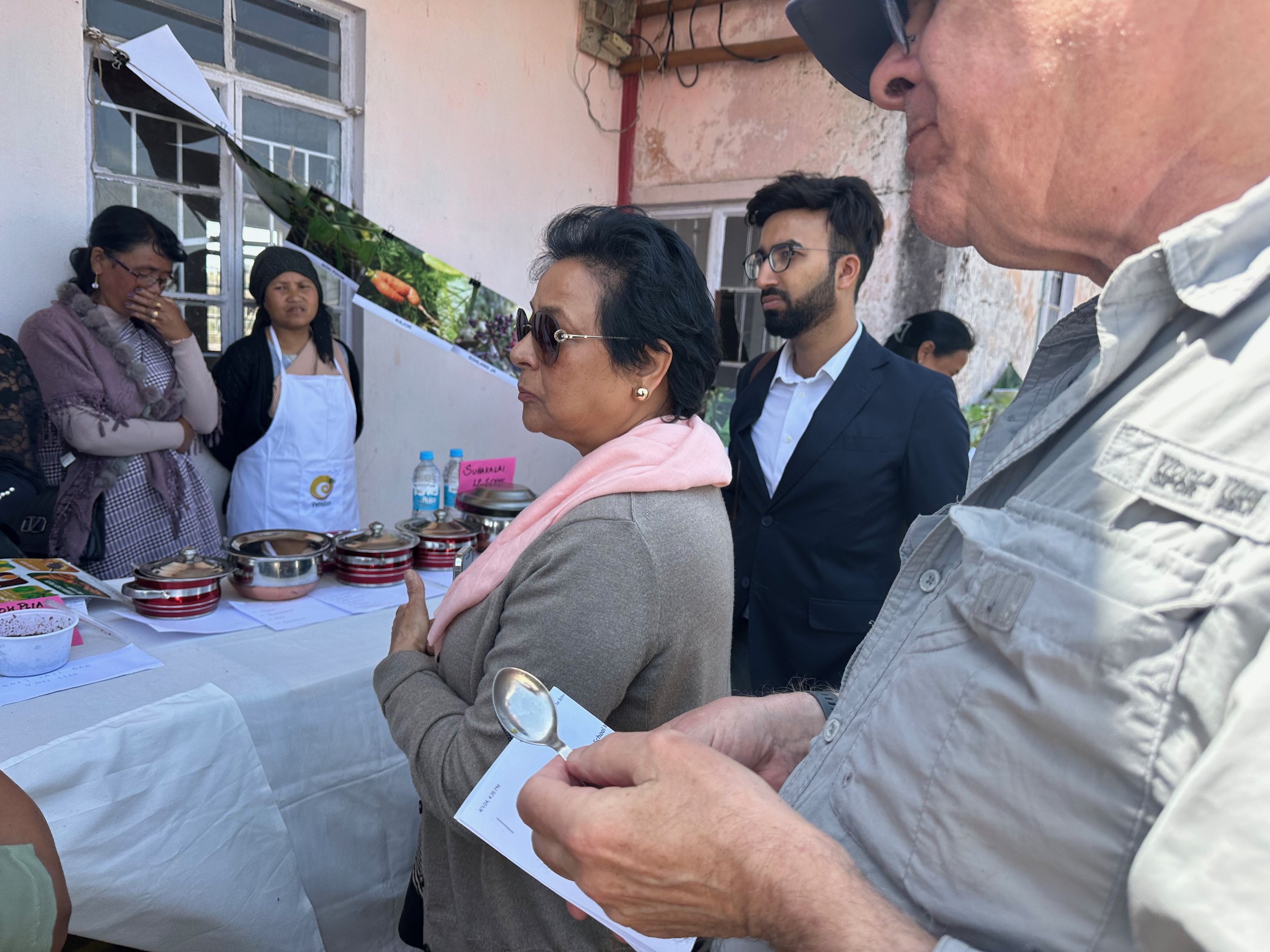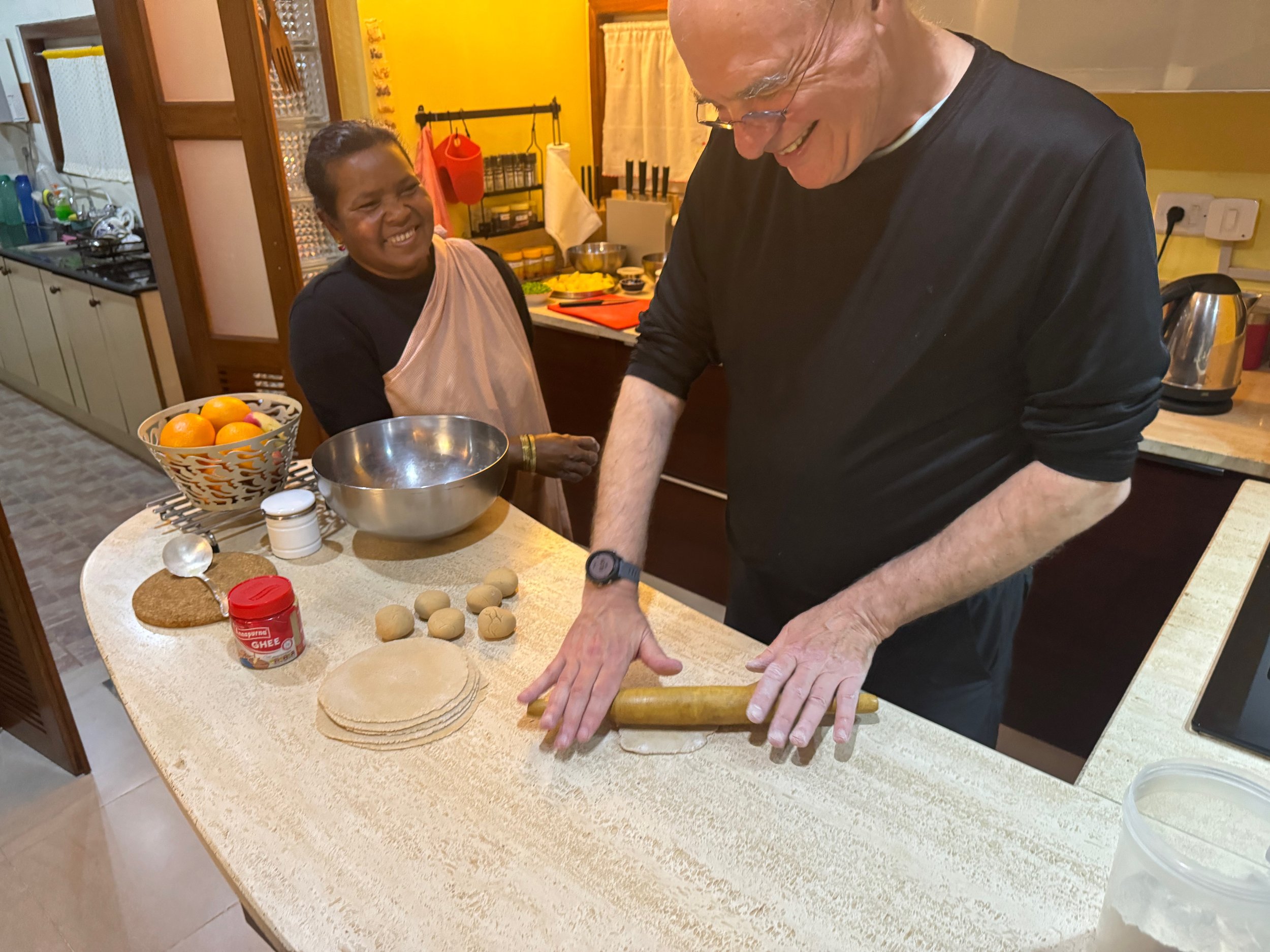India, Khasi-style
It’s impossible to put into words the ten or so days spent in Meghalaya - the NE state of India. We were hosted by the amazing Phrang and Anita Roy, who are from there and retain their ancestral home. They started an incredible organization called NESFAS (North East Society For and Agroecology Support). They are Khasi, fighting hard to preserve their indigenous foodways and that of indigenous peoples around the world.
To engage with a tribal society felt so special - and this one is pretty incredible. There is tremendous pride in their culture - from the dress (two pieces of cloth for women, pinned at the shoulders, called jainsem) to the language to the food and farming to the fact that it is one of the few matrilineal societies that persists - it was a lot to take in during a relatively short stay, but it sank in deep.
Mark did a good job of contextualizing the state within India on his platform - so I will skip that. Just to say that we were indeed in India and in a way we weren’t.
On our first night, the tremendously bright NESFAS staff introduced us to their work to protect and uplift indigenous foodways. They are working with farmers, schools, and the villages to retain their systems which are not only cultivated (largely around rice paddies that also host a number of wild edibles and fish), but a long history of foraging that is unique to each village. Some of the food we tasted was only foraged in one village - other Khasi, seemingly down the road, couldn’t recognize it.
A couple days later we visited a village that put on a huge feast for us. I took portraits of the women farmers and we ate about 20 different things. Maybe 30. Majority of them totally new to me. My favorite was banana flower salad.
Another village visit took us to a largely (seemingly women-led) cooperative society that has created a reputation around a cafe serving Khasi food which draws people from all over. Another 20-30 dishes there. And just so great to see women working together and supporting each other. They also make clothing from the eri silk worms (that they also eat) - some of the most beautiful fabric I have ever seen.
Some villages are virtually inaccessible except by foot - one in particular is only reached by 3,000 steps - we entertained the idea of going, but Phrang’s wisdom prevailed and we didn’t attempt it. Happily, NESFAS has put together this beautiful and moving video about its importance (link here). One village that we did visit, after several hours of bumping along a dirt road, was a thriving community where we failed to hike to the living bridge (basically two trees trained over generations to form a bridge over a very deep ravine, thus connecting villages) because the hike down to the bridge was too scary. As we were leaving the trail, somewhat defeated, a young family with two kids, one with limited sight, was nonchalantly entering the trail to collect some food on the other side as if it was just a walk around the block.
Black sesame is a mainstay of Khasi food - and perilla seeds (from shiso) are in lots of things. They use every part of the banana plant, as mentioned - a take home for me who is trying to grow bananas in Bermuda. Chickens are common - and most often sold live and killed and prepped for you on the spot - and every part is used. ‘Innards’ was an often-translated word for us. And every kind of vegetable you can imagine and some you can’t. There’s a flower that is bright reddish/purple that you pluck the stamen out of before you make it into a sort of chutney. Like that - on and on.
One of the most memorable days was a festival celebrating the work NESFAS has done with school lunches - seems to be a thread on this journey. They are working with school staff, students and their families to encourage local food and ensure the food traditions are handed down. I had the honor of inaugurating the festival and Mark and Anita were judges for the school food competition. I left the day feeling tremendous hope for the future - amidst all the hardship and hatred that is making the headlines we heartbreakingly read, there is this - this quiet, beautiful, hard work of lifting up the good, the important, the humane.
Mark getting a lesson on flatbreads from Mini who is saying that his look like the country of India - not round (like hers that you can see in the pile).






















